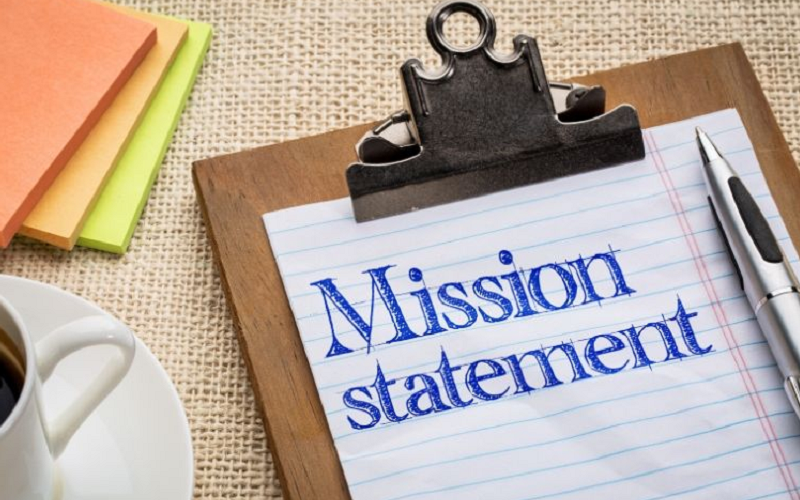
Every nonprofit organization thrives on a clear sense of purpose, a guiding light that illuminates its path and rallies its members. This guiding light is often embodied in a succinct, powerful mission statement. For nonprofits, a mission statement is more than just a few lines of text on a website or brochure; it’s a declaration of intent, a promise to stakeholders, and a compass for decision-making. Crafting a compelling mission statement can be both an art and a science, requiring a balance of inspiration, introspection, and strategic thinking.
Contents
- Understanding the Purpose of a Nonprofit Mission Statement
- Preparatory Steps Before Writing a Nonprofit Mission Statement
- Key Elements of an Effective Nonprofit Mission Statement
- Crafting the Nonprofit Mission Statement: A Step-by-Step Guide
- References
Understanding the Purpose of a Nonprofit Mission Statement
Diving into the process of crafting a mission statement requires a foundational understanding of its significance and role. A mission statement isn’t merely a string of words but a manifestation of an organization’s core purpose and direction.
Distinguishing Between Vision and Mission
Before we delve deeper into the intricacies of the mission statement, it’s imperative to distinguish it from another crucial organizational statement: the vision statement.
Vision Statement
This speaks to the future. It paints a picture of the world or situation your nonprofit aims to create or the pinnacle it aspires to reach. Think of it as the grand dream or the ultimate goal.
Mission Statement
This focuses on the present and the actions required to reach that vision. It states the reason for the nonprofit’s existence and defines its primary objectives, functions, and stakeholders. It’s the roadmap to achieve the dream.
For instance, if a nonprofit’s vision is “A world free from hunger,” its mission could be “To provide immediate food assistance to those in need and address the root causes of hunger through education and advocacy.”
The Role of the Mission Statement in Guiding Operations and Strategy
A mission statement is not merely a decorative element for your website or annual report. It plays a pivotal role in guiding organizational actions, from daily operations to long-term strategic planning [1].
Decision-making
When faced with multiple avenues or opportunities, the mission statement helps prioritize and decide on actions that align with the organization’s core purpose.
Alignment
It ensures that all departments, teams, and individual members move cohesively towards a common goal, preventing silos and divergent agendas.
Measurement
By defining the organization’s core objectives, the mission statement indirectly establishes criteria against which progress can be measured. Are your projects and programs fulfilling the promise of your mission?
The Impact of a Strong Mission Statement on Stakeholders
Stakeholders, whether they’re donors, beneficiaries, volunteers, or employees, need a clear understanding of an organization’s purpose to remain engaged, committed, and supportive.
Trust and Credibility
A clear and compelling mission statement communicates transparency and dedication, building trust among stakeholders.
Engagement
When people understand and resonate with your cause, they’re more likely to engage, be it through donations, volunteering, or other forms of support.
Differentiation
In a world crowded with nonprofits, a distinct mission statement helps you stand out, showing potential donors or volunteers why your organization is unique or more relevant to their personal passions [2].

Preparatory Steps Before Writing a Nonprofit Mission Statement
Before putting pen to paper or fingers to keyboard, there’s groundwork to be done. Crafting an authentic and impactful mission statement requires reflection, research, and engagement. Taking the time for these preparatory steps ensures your mission statement is not only well-informed but resonates deeply with the heart of your organization and its stakeholders.
Research on Successful Mission Statements from Peer Organizations
Starting with research offers both inspiration and clarity.
Inspiration
By studying the mission statements of other nonprofits, especially those you admire or consider successful, you can identify patterns, styles, or wordings that resonate with you.
Avoiding Overlap
If your nonprofit operates in a space with many similar organizations, understanding their mission statements can help ensure yours stands out and doesn’t inadvertently echo another’s.
Learning from Mistakes
Not all mission statements hit the mark. By understanding what doesn’t work or what feels inauthentic in others, you can avoid similar pitfalls.
But remember, while it’s beneficial to learn from others, your mission statement must remain unique to your organization’s essence.
Engage Stakeholders: Why Their Input Matters
Your nonprofit doesn’t exist in a vacuum. It’s a living entity with a diverse group of stakeholders, each with unique insights and perspectives.
Gathering Varied Perspectives
Engaging stakeholders early on can provide varied viewpoints, highlighting aspects of your mission that you might not have considered.
Building Ownership
When stakeholders contribute to the mission crafting process, they’re more likely to feel a sense of ownership and commitment to it. This can foster deeper engagement in the future [3].
Ensuring Relevance
Stakeholders, especially beneficiaries, can ensure your mission is grounded in reality and addresses actual needs or concerns.
Consider holding focus groups, surveys, or brainstorming sessions to gather this invaluable input.
Identifying Core Values and Goals
At the heart of your mission statement lie your nonprofit’s core values and primary goals.
Core Values
These are the fundamental beliefs guiding your nonprofit’s actions and decisions. They’re the non-negotiable principles that underpin everything you do. Whether it’s integrity, compassion, sustainability, or empowerment, identifying these values can help anchor your mission statement.
Primary Goals
While your vision outlines the grand dream, the primary goals are the tangible milestones or impacts your nonprofit aims to achieve in its journey. Whether it’s educating a specific number of individuals, conserving particular ecosystems, or influencing policies, these goals give direction to your mission.

Key Elements of an Effective Nonprofit Mission Statement
Crafting a mission statement is not about stringing together beautiful words, but encapsulating the essence of your nonprofit’s purpose and commitment. An effective mission statement is not only reflective of your organization’s core but also connects deeply with the audience. To ensure it achieves this delicate balance, there are several key elements to consider.
Clarity and Conciseness
In the world of mission statements, brevity and clarity are golden.
Avoid Ambiguity
Your audience should not have to dissect your statement to understand its meaning. Use clear, straightforward language that leaves no room for misinterpretation.
Be Succinct
While it’s tempting to detail every nuance of your nonprofit’s purpose, a mission statement should be concise. Aim for a statement that’s impactful in as few words as possible, ensuring it’s easily remembered and shared [4].
Relevance to the Target Audience
A mission statement is not an internal memo; it’s a declaration to the world. Ensuring it resonates with your target audience is crucial.
Speak Their Language
Use terms and phrases that are familiar and resonate with your stakeholders, avoiding jargon that might alienate or confuse.
Address Core Concerns
Highlight aspects of your mission that directly relate to the needs, aspirations, or concerns of your target audience.
Reflecting the Unique Value Proposition
In a world filled with nonprofits vying for attention and resources, your mission statement should highlight what makes your organization distinct.
Emphasize Differentiators
Whether it’s a unique approach, a particular focus group, or an innovative solution, weave these distinct aspects into your mission.
Showcase Expertise
If your nonprofit is renowned for a specific expertise or has a proven track record in certain areas, subtly hint at it in your mission statement.
Emphasizing Long-Term Impact
While the mission focuses on present actions, it’s essential to give a nod to the long-term difference your organization aims to make.
Incorporate Impact Language
Words like “transform,” “empower,” “sustain,” or “innovate” can convey a sense of lasting change.
Highlight Beneficiaries
Be clear about who benefits from your work, whether it’s individuals, communities, ecosystems, or society at large.

Crafting the Nonprofit Mission Statement: A Step-by-Step Guide
With a solid understanding of the key elements that should be present in your mission statement, it’s time to delve into the crafting process. Creating a compelling mission statement is both an introspective journey and a strategic exercise.
Starting with a Draft
Like any masterpiece, a great mission statement begins with a rough sketch.
Brainstorm Freely
Begin by listing words, phrases, or sentences that resonate with your nonprofit’s purpose, values, and goals. Don’t limit yourself at this stage; let ideas flow [5].
Combine and Refine
Once you have a substantial list, start combining ideas, refining sentences, and seeing how different elements fit together.
Draft Versions
It’s unlikely you’ll hit the mark in one go. Create multiple versions and variants, experimenting with wording, order, and emphasis.
Seeking Feedback and Iteration
A mission statement is a collective representation, and thus, collective input can be invaluable.
Engage Stakeholders
Share drafts with diverse stakeholder groups, from staff and volunteers to beneficiaries and partners. Their feedback can offer fresh perspectives and identify potential gaps or ambiguities.
Iterate and Refine
Based on feedback, refine your drafts. This iterative process helps ensure clarity, resonance, and alignment with your organization’s essence.
Using Action-Oriented Language
Your mission is about action – what your nonprofit does and aims to achieve. Reflect this dynamism in your language.
Choose Active Verbs
Words like “empower,” “drive,” “champion,” “advocate,” and “foster” convey a proactive stance.
Avoid Passive Constructions
Sentences like “There is a need to…” are less impactful than direct assertions like “We address the need to…”
Ensuring Alignment with Organizational Goals
Your mission statement should be in sync with your nonprofit’s broader strategy and goals.
Cross-Reference with Strategy Documents
Ensure that the mission statement aligns with the strategic direction and objectives outlined in your organization’s strategic plans or similar documents.
Test for Alignment
Ask yourself, “Does this mission guide us towards our larger vision and goals?” If not, tweaks might be necessary.
Keeping it Memorable
Your mission statement should not only inform but inspire. Aim for a statement that lingers in the minds of those who read or hear it.
Rhythm and Pacing
Pay attention to the flow of the statement. A well-paced statement can be more impactful and memorable.
Avoid Overcomplexity
While it’s important to be comprehensive, avoid cramming too many ideas or details. Simplicity often leads to better recall.
References
[1] 10 Killer Mission Statement Examples For Nonprofits
[2] How to Write an Awesome Nonprofit Mission Statement
[3] Nonprofit Mission Statements – Good and Bad Examples
[4] 500 of the Best Nonprofit Mission Statements
[5] How to Create an Effective Non-Profit Mission Statement
